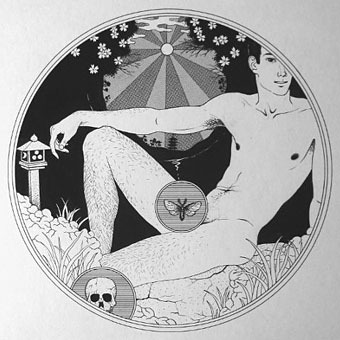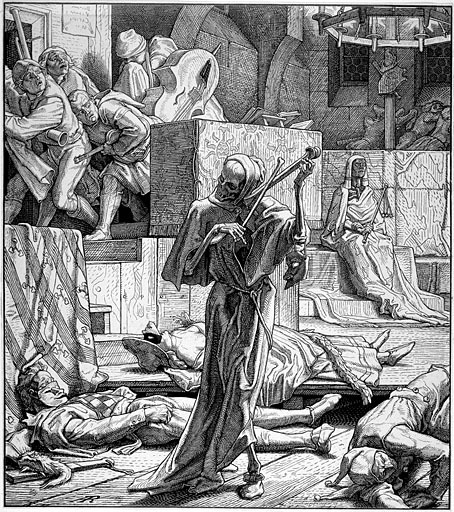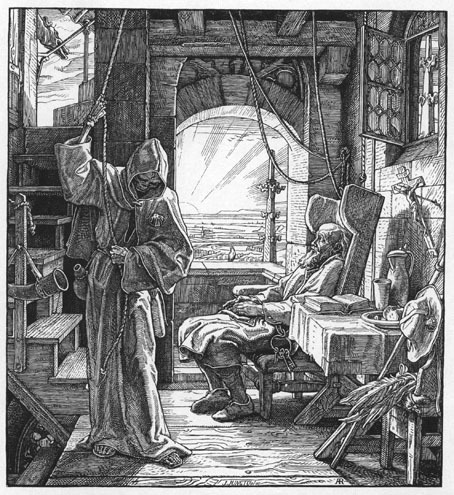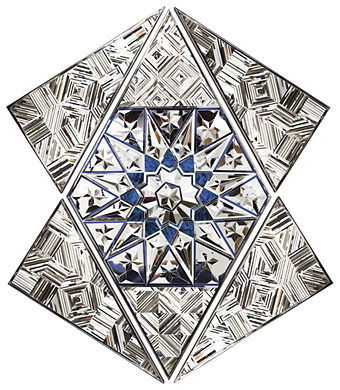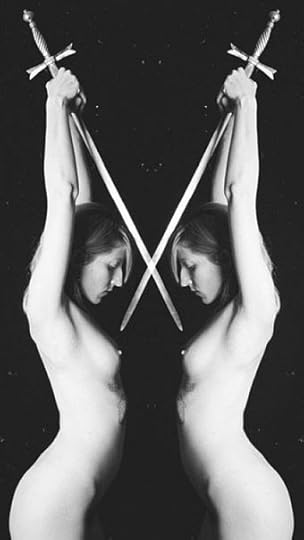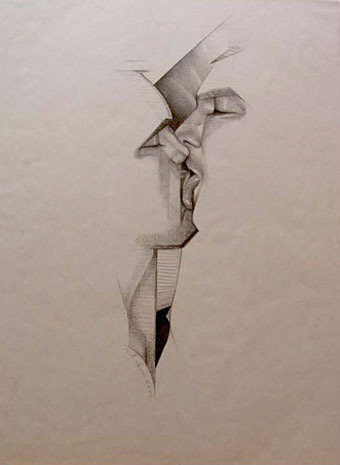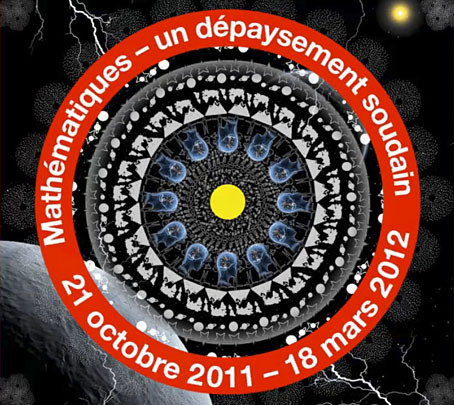John Coulthart's Blog, page 291
November 22, 2011
Pogány's Turkish fairy tales

The illustrations are by Willy Pogány, the forty-four fairy tales were collected and translated by Ignácz Kunos. This wasn't the first edition of Kunos's book which dates back to 1889, but Pogány's edition must be one of the most heavily illustrated, with drawings in a variety of styles throughout. The tipped-in plates look like woodcuts which is a style I've not seen from Pogány before. Elsewhere there are many comic demons and monsters rather like the kinds of things Sidney Sime used to enjoy inventing. And many Orientalist motifs, of course The Internet Archive copy isn't dated but other sites give a date of 1913. This copy is also poorly hand-painted in places. Sacred Texts has the illustrations sans daubings.

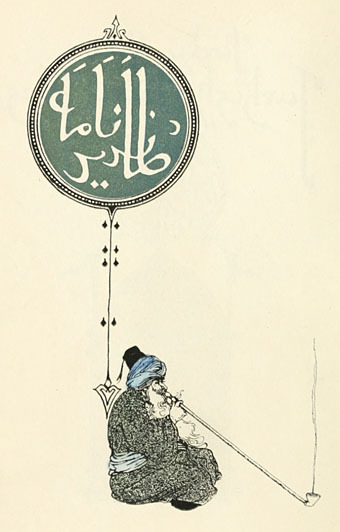
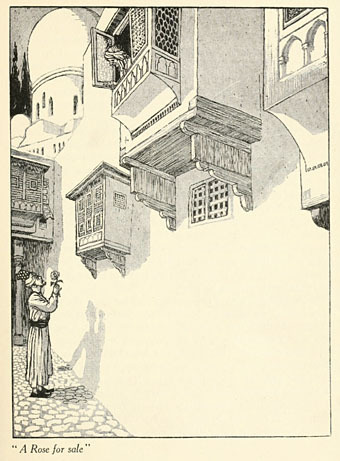

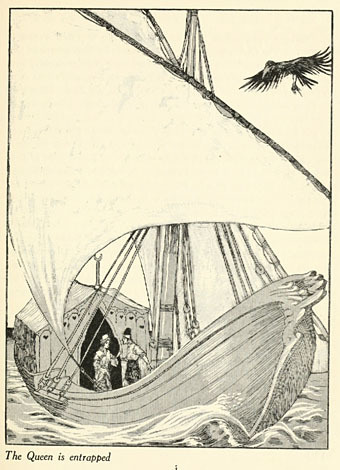
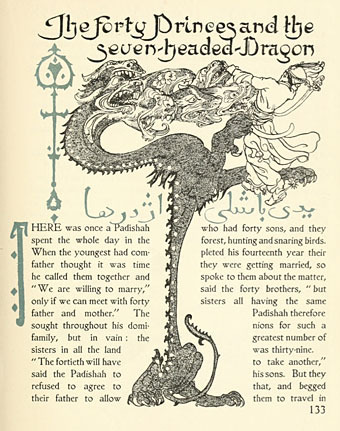
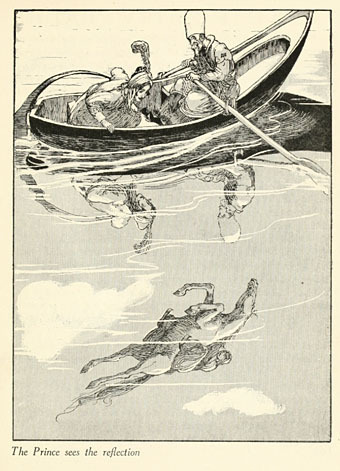
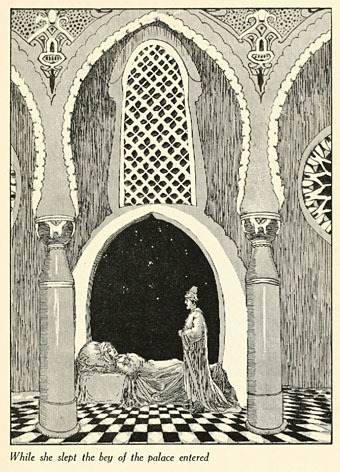
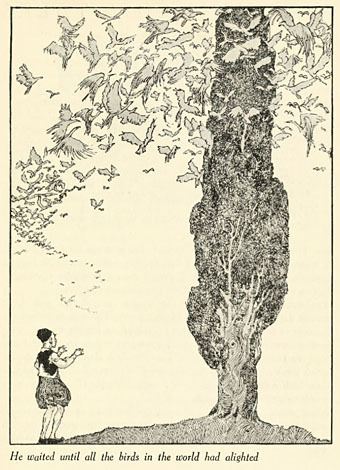
Elsewhere on { feuilleton }
• The illustrators archive
Previously on { feuilleton }
• Maxfield Parrish's Arabian Nights
• Thomas Mackenzie's Aladdin
• Harry Lachman's Inferno
• Willy Pogány's Lohengrin
• More Arabian Nights
• Edward William Lane's Arabian Nights Entertainments
• Willy Pogány's Parsifal
November 21, 2011
Japanese gay art
An untitled drawing by Sadao Hasegawa from Japanese Gay Art, an English-language site with a substantial collection of works by Hasegawa and others, all of which are for sale. Examples run the spectrum from Gengoroh Tagame's beefcake S&M to Hideki Koh's delicate geisha boys. Something for everyone, in other words. There are also artist interviews, and a handful of articles about this area of the Japanese art world.
Elsewhere on { feuilleton }
• The gay artists archive
Previously on { feuilleton }
• Gekko Hayashi: homoerotics and monsters
• The art of Ben Kimura
• The art of Goh Mishima, 1924–1989
• The art of Hideki Koh
• Secret Lives of the Samurai
• The art of Sadao Hasegawa, 1945–1999
• The art of Takato Yamamoto
November 20, 2011
Alfred Rethel's Totentanz
Der Tod als Erwürger (1851) by Alfred Rethel.
The Danse Macabre seems to be a theme of the month given recent postings at BibliOdyssey, Wurzletod and 50 Watts. In addition to posting examples, BibliOdyssey points the way to some original sources at Düsseldorf, four of them books that feature engravings by German artist Alfred Rethel (1816–1859). (All four books appear to be the same works, unfortunately.) The pictures here are later Rethel pieces that are a lot more detailed, and may well be the last things the artist had published. A note at the British Museum (where a larger copy of the first picture can be seen) states that Rethel was "Insane since 1853″.
Der Tod als Freund (1851) by Alfred Rethel.
Elsewhere on { feuilleton }
• The etching and engraving archive
Previously on { feuilleton }
• The art of Jacopo Ligozzi, 1547–1627
• Massachusetts memento mori
• Skull cameras
• Walmor Corrêa's Memento Mori
• The skull beneath the skin
• Vanitas paintings
• Very Hungry God
• History of the skull as symbol
November 19, 2011
Weekend links
Group I (Convertible Series, 2010) by Monir Farmanfarmaian.
The four albums recorded by Bruce Gilbert and Graham Lewis under the name Dome are being reissued by Editions Mego together with Gilbert & Lewis's Yclept album. I always preferred Gilbert & Lewis in their Dome incarnation (and Colin Newman solo) to the punk and post-punk stylings of their former band, Wire. Dome were (among other things) eccentric, awkward, noisy, hypnotic and experimental. Their recordings seemed to go largely unnoticed in the early 1980s so it's good to see them being reissued.
• A Children's Treasury of American Cops Brutally Attacking Citizens: "…it takes quite a lot of tax money to keep a bunch of vicious thugs overfed and dressed like junior Darth Vaders with their portable hard-ons, on the off-chance some college kids might one day peacefully sit outside to protest this nation's revolting descent."
• "Stevenson, as has been said, was disarmingly candid about the material he borrowed for Treasure Island. One name, however, is missing from the extensive catalogue of self-confessed 'plagiarisms'." John Sutherland at the TLS.
• "Messiaen's advice was revelatory. 'You have the good fortune of being an architect and having studied special mathematics', he told Xenakis. 'Take advantage of these things. Do them in your music.'"
• "They always said punk was an influence. Tracey Emin, Damien Hirst, what a load of old shit that was. It's Thatcherite art care of Saatchi & Saatchi." And don't ask Jamie Reid about the Sex Pistols.
• Dennis Cooper is interviewed at Lambda Literary. I was surprised last week to find my recent post about William Burroughs' The Wild Boys linked on a feature about the novel at Cooper's blog.
• Cosmic Geometry: The art of Monir Farmanfarmaian at The Paris Review. Related: Monir Farmanfarmaian at the Haines Gallery, San Francisco.
• Paleolithic phallic art suggests that many early European men scarred, pierced and tattooed their penises.
• FACT mix 301 is a selection of dub tracks, dubstep pieces and Middle Eastern songs compiled by Kahn.
• Who left a tree, then a coffin in the library?
• The Little Journal of Rejections (1896).
• Clive finished another painting.
• The Great Salt Desert of Iran.
• Keep Drawing.
• Troisième (1980) by Colin Newman | And Then… (1980) by Dome | The Red Tent pts I & II (1980) by Dome) | Jasz (1981) by Dome.
November 18, 2011
Koloman Moser posters
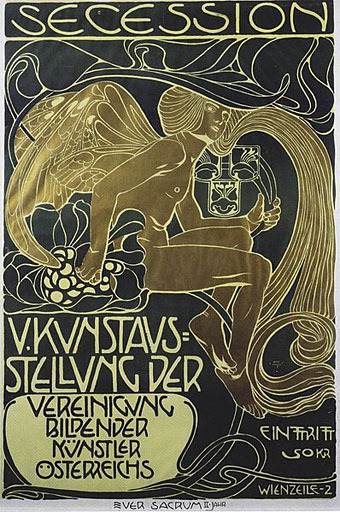
Secession poster (1899).
Since I've been delving over the past year into the fin de siècle culture of Germany and Austria, the name of Koloman Moser (1868–1918) has kept recurring. This is partly because of Moser's associations with the Viennese Secession and the Wiener Werkstätte, of course, but I've made a point of drawing attention to his work since it's struck me as some of the most remarkable being produced anywhere in Europe during the period 1895–1910. Moser's poster designs are a good example of his authority as an artist and graphic designer who quickly evolved from Mucha-derived Art Nouveau flourishes to a degree of stylisation that was incredibly advanced for the early 1900s. The graphics of Moser and fellow artist/design Alfred Roller point the way to Art Deco twenty years later, and also to the psychedelic era whose poster artists eagerly borrowed motifs, figures and lettering designs from Moser, Roller, Mucha and others.

Frommes Kalender poster (1899).
Wikimedia Commons has a generous sampling of Moser's work that shows his incredible versatility in a variety of media. The Secession designers, and Moser in particular, and memorialised in Paul Shaw's typeface design, Kolo.

Illustrierte Zeitung poster (1900).

Richardsquelle poster (1899).
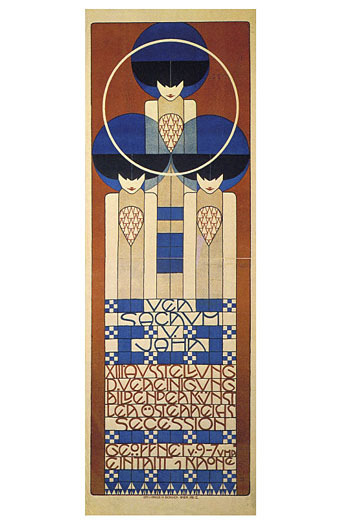
Secession poster (1902).

Jung Wiener Theater poster (1903).
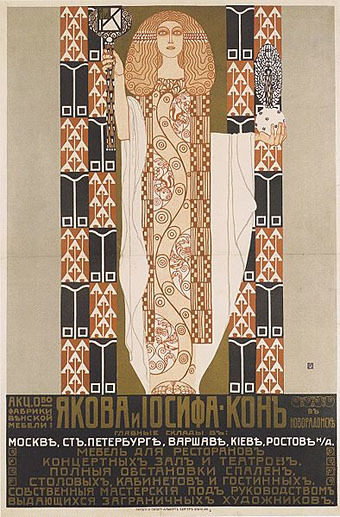
Poster for the Jacob & Josef Kohn furniture company (1904).
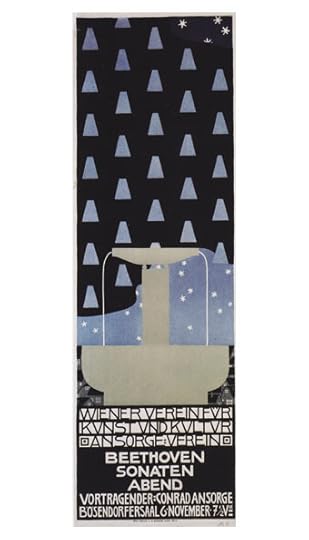
Poster for a Beethoven sonata evening (1908).
Previously on { feuilleton }
• Secession posters
November 17, 2011
Ver Sacrum, 1902
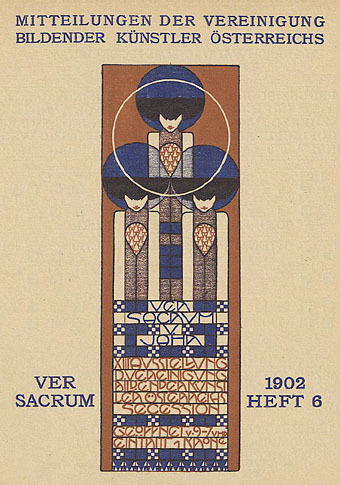
Continuing the series of posts about Ver Sacrum, the art journal of the Viennese Secession. The volume of issues for 1902 maintains the same format as the previous year, beginning with a series of calendar pages then proceeding to showcase art, sculpture and graphics from Austria and elsewhere. The Secession exhibitions in Vienna were a highlight of this year, something explored in greater detail in the pages of Deutsche Kunst und Dekoration. Also in these issues is more Symbolist art, this time from Jan Toorop and Franz Stuck. Among the latter's drawings and paintings there's a version of his popular temptress-with-serpent theme here entitled The Vice. (Stuck's The Sin is the most reproduced of this series.) I hadn't seen this one before which is surprising seeing as it's his only (?) horizontal treatment of the theme.
As before, anyone wishing to see more can browse all 412 pages or download the entire volume here.

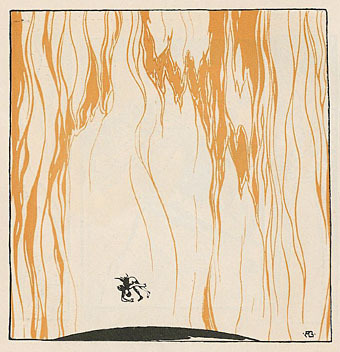
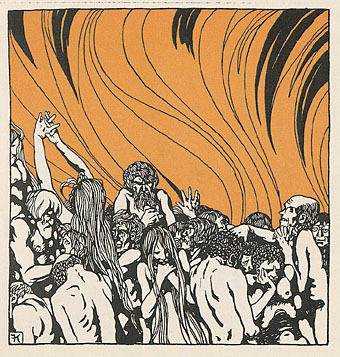

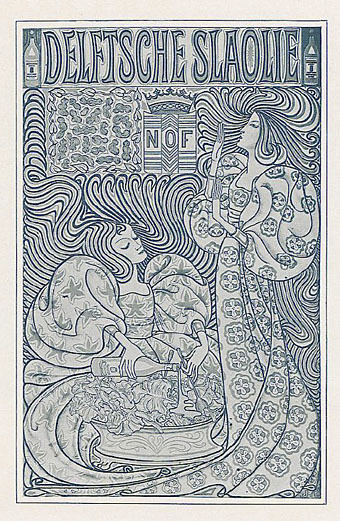
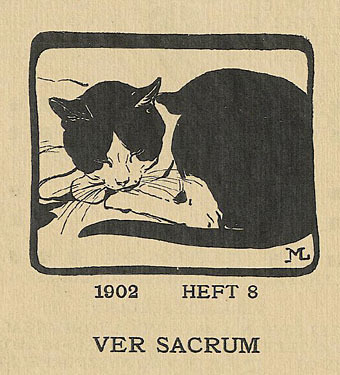

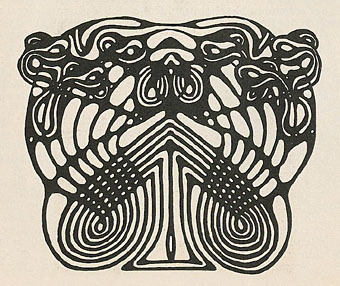
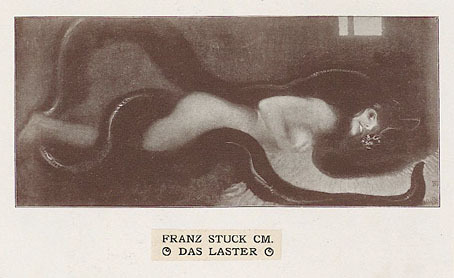
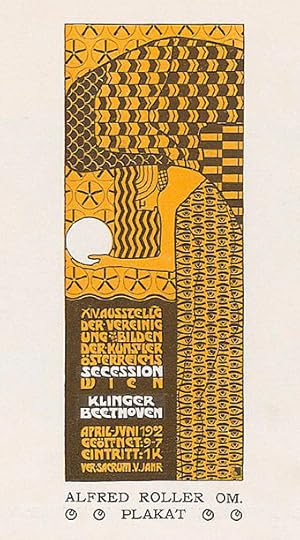

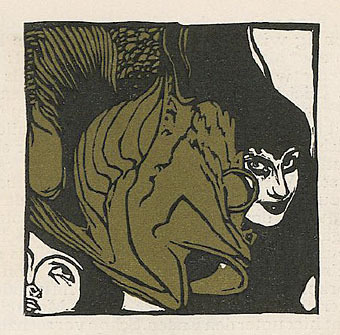
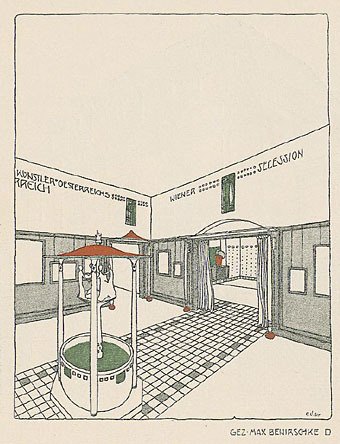
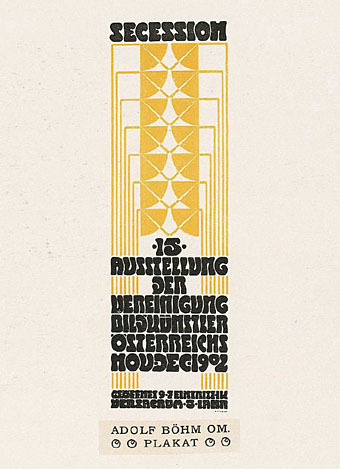
Previously on { feuilleton }
• Ver Sacrum, 1901
• Ver Sacrum, 1900
• Ver Sacrum, 1899
• Ver Sacrum, 1898
• Secession posters
November 16, 2011
Secret Societies and Spirit Boards
Komposition für einen Rhombus (2007) by Fabian Marti.
Fabian Marti's print is one of the few works that stood out for me in the press materials for the Secret Societies exhibition which has just opened at the CAPC Museum of Contemporary Art, Bordeaux:
[Secret Societies] deals with the general theme of secret societies through the prism of contemporary art in the current context of media super-exposure – from WikiLeaks to Credit Rating Agencies (CRA), just to quote two current examples. Artists have always been fascinated by the unknown and the occult. But unlike journalists who are mainly focused on investigating present-day news, artists work around the mechanisms of the secret and are better equipped to question the very limits of the ideology of transparency in our era of super-exposure.
Unfortunately many of the works look like the customary state of affairs, with a bunch of contemporary artists doing their usual schtick and not really questioning (familiar gallery buzzword) anything much at all. On the plus side they have a screening of Kenneth Anger's Invocation of My Demon Brother, and also a contribution from Cerith Wyn Evans whose Acephalé reworks in neon the André Masson design for Georges Bataille's Surrealist secret society. Gary Lachman has created an audio guide for the exhibition which is curated by Cristina Ricupero and Alexis Vaillant and which runs until February 26th, 2012.
For a more determinedly occult showing this month, there's Spirit Board curated by JL Schnabel at the Articulated Gallery, San Francisco. And elsewhere I'd recommend the work of Scott Treleaven and Jesse Bransford.
Previously on { feuilleton }
• The art of Scott Treleaven
November 15, 2011
The art of Mel Odom
Boys Kiss 2 (2007).
The gay artists archive has for a long time been the most popular part of this site, that page proving twice as popular as the next post down. In which case I feel I ought to try and add to its contents a bit more regularly…
Mel Odom is an American artist who since the late 1970s has been highly-regarded as a book and magazine illustrator. (JVS Publishing has more about this side of his output.) For the purposes of this post there's male nudity and some homoerotica, of course, in that Art Deco-ish Tamara de Lempicka style that was very popular in the 1980s. For the time being, this site seems to have the best selection of his paintings and drawings. If you need more then Flickr is one place to go searching.
November 14, 2011
Mathematics – A Beautiful Elsewhere
David Lynch turns up again via a post at New Scientist about Mathematics – A Beautiful Elsewhere, an exhibition currently running at the Fondation Cartier, Paris:
A large number of mathematicians and scientists contributed to the creation of this exhibition, and eight of them acted as its overseers: SIR MICHAEL ATIYAH, JEAN-PIERRE BOURGUIGNON, ALAIN CONNES, NICOLE EL KAROUI, MISHA GROMOV, GIANCARLO LUCCHINI, CÉDRIC VILLANI and DON ZAGIER. Representing a wide range of geographical backgrounds and mathematical disciplines, they work in areas such as number theory, algebraic geometry, differential geometry, topology, partial differential equations, probability, mathematics applied to biology…
They were accompanied by nine artists chosen for their exceptional ability to listen, as well as for their great sense of curiosity and wonder. All of these artists have exhibited at the Fondation Cartier in the past: JEAN-MICHEL ALBEROLA, RAYMOND DEPARDON AND CLAUDINE NOUGARET, TAKESHI KITANO, DAVID LYNCH, BEATRIZ MILHAZES, PATTI SMITH, HIROSHI SUGIMOTO and TADANORI YOKOO, as well as Pierre Buffin and his crew (BUF). They worked together to transform the abstract thinking of mathematics into a stimulating experience for the mind and the senses, an experience accessible to everyone.
The image above is credited to the surprising combination of Lynch and artist/collagist/psychedelicist Tadanori Yokoo. There's a catalogue of works on the Fondation site but since all the pages there are Flash-based it's impossible to link to anything. One of the pieces that caught my attention was by Beatriz Milhazes, a Brazilian artist whose work I don't recall having seen before although she's been exhibited in the UK. Her abstract paintings are gorgeous things. The James Cohan Gallery has a selection of her work.
Previously on { feuilleton }
• David Lynch window displays
• David Lynch in Paris
November 13, 2011
Edward Gorey book covers

Scribner's edition (USA, 1978).
I'm still working through the Robert Aickman stories so curiosity had me looking up the covers of his first editions. Edward Gorey was a fitting choice as artist for Aickman's fifth story collection, Cold Hand in Mine, and it's interesting seeing his work labelled on both these books as "strange stories"; paperbacks tended to brand his fiction as horror which isn't always accurate. We're back with that term "weird" again: reading Aickman today is like finding the quotidian Britishness of Alan Bennett darkening into the inexplicable nightmares of David Lynch. Gorey's gloomy renderings suit these atmospheres a lot better than later attempts to package Aickman's books so it's a shame he wasn't allowed to illustrate more of them. Cold Hand in Mine has recently been republished by Faber, together with two more collections of Aickman's stories.
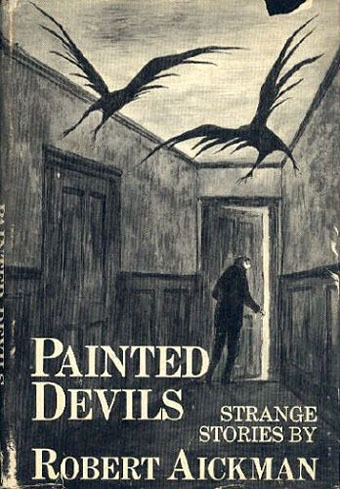
Scribner's edition (USA, 1979).
Edward Gorey illustrated and designed many book covers, not all of them horror or ghost stories. This Flickr set has some of the more notable examples which includes Cold Hand in Mine. Also a flaming spider… There are more covers at Gorey Books where I was surprised to find he'd produced a cover for A Room in Chelsea Square, an early novel of gay life in London by Michael Nelson that was originally published anonymously to spare the author the attentions of intolerant authorities. Gorey's drawing is like something Philippe Jullian might have done had he been a more careful draughtsman.
• See also: Edward Gorey's Elephant House for more covers and Gorey ephemera.
Elsewhere on { feuilleton }
• The book covers archive
• The illustrators archive
Previously on { feuilleton }
• Weird Fiction Review
John Coulthart's Blog
- John Coulthart's profile
- 31 followers


